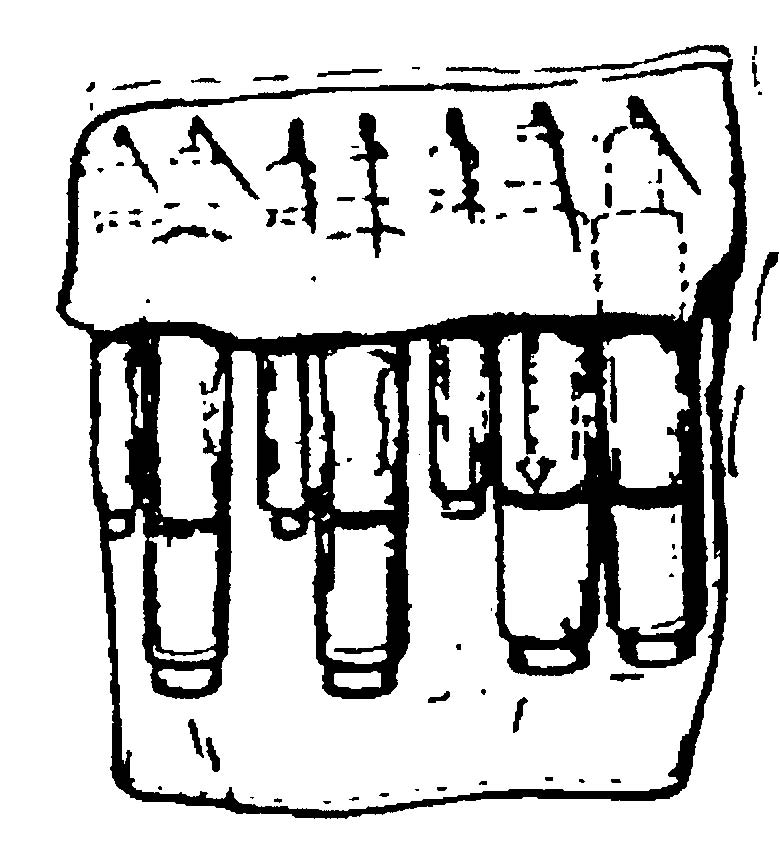Treating Chemical and Biological Agent Casualties
Lesson 2: Treating
Nerve Agent Poisoning
Section II: Treat Casualty
2-8
2-8. ATTACH USED AUTOINJECTORS TO CASUALTY'S CLOTHING
The used autoinjectors are attached to the casualty's clothing in a location where they will be quickly seen when the casualty receives treatment by other medical personnel. The autoinjectors will quickly indicate what kind of medication and how much medication the soldier has received. This information will help in providing additional care to the casualty. Be careful to avoid tearing or puncturing your protective gloves while sticking the needle through the flap and while bending the needle. Steps for attaching the used autoinjectors to the casualty's clothing are given below.
a. Lift Flap. Lift the pocket flap on the casualty's protective over-garment.
b. Insert 2-PAM Chloride Needle. Push the needle of the used 2-PAM chloride autoinjector through the flap. Penetrate the flap from the back so that the point of the needle will be pointing up and outside the flap.
c. Bend Needle. Bend the portion of the needle that penetrated the flap so that it forms a hook.
d. Insert Atropine Needle. Push the needle of the used atropine autoinjector through the flap in the same manner as the other autoinjector.
e. Bend Needle. Bend each needle to form a hook. Be careful not to tear protective clothing/gloves when bending the needles.
f. Repeat Steps. Repeat steps b through e for the second and third Mark I kits.
g. Insert CANA. Insert the used CANA injector side of the last used nerve agent antidote.
h. Bend Needle. Bend the CANA needle the same as the six autoinjectors (figure 2-9).
Figure 2-9. Pocket flap with used autoinjectors attached.


